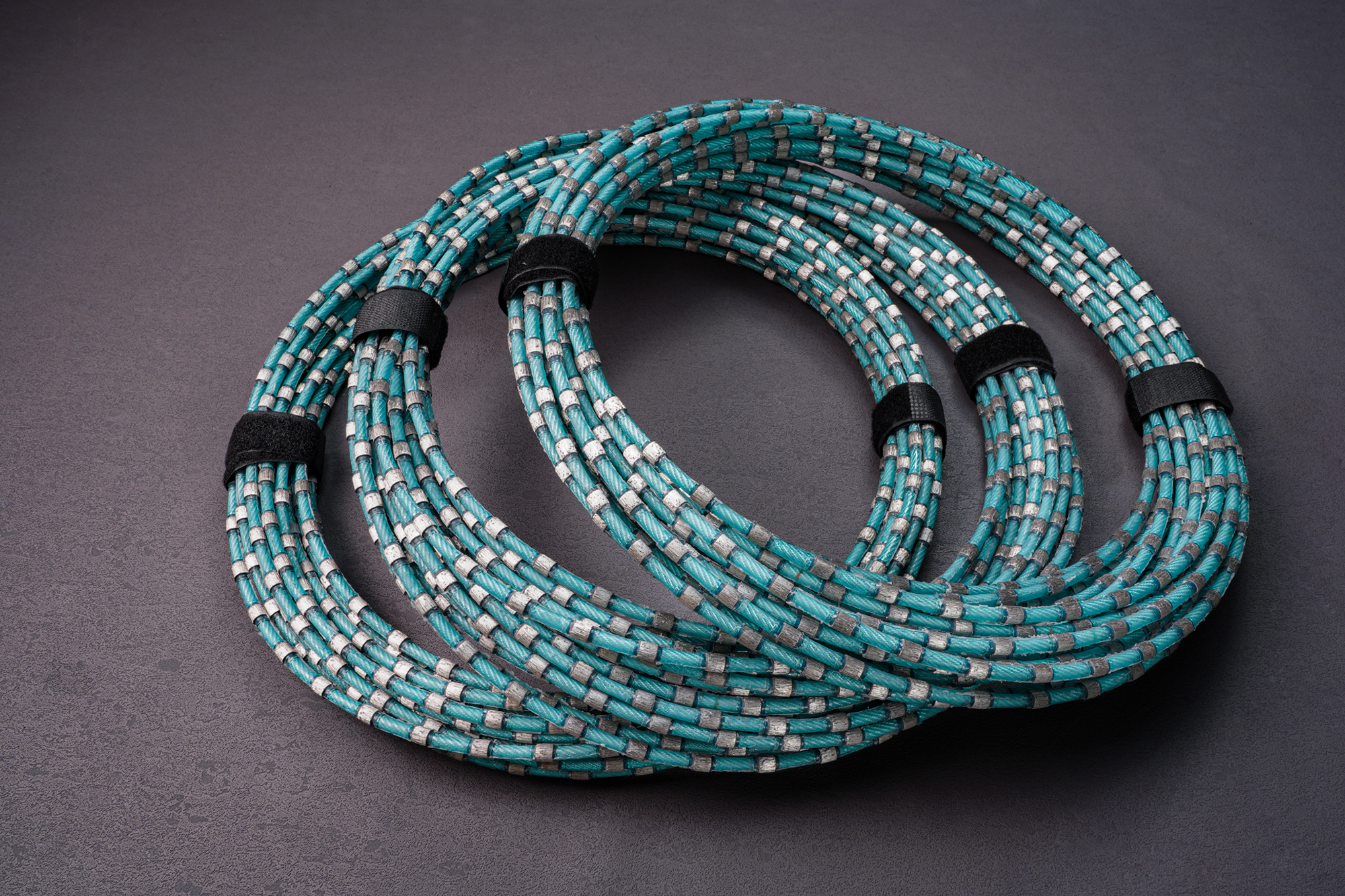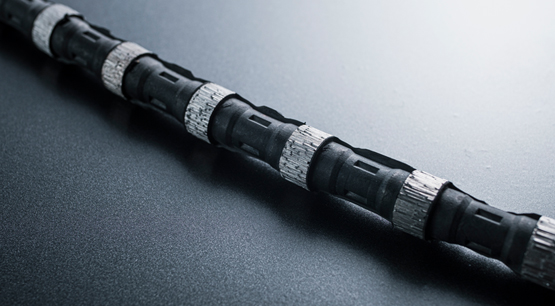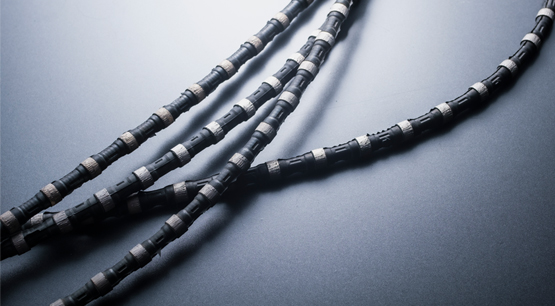Diamond wire saw threading is a crucial step in the diamond wire saw cutting process, which involves threading, wrapping, and connecting the wire to form a closed loop around the material to be cut.
Here is a detailed description of the entire process along with some important considerations:
1. Threading: To begin, secure the ends of the diamond wire saw onto the two pulleys of the wire saw machine. Then, position the middle part of the wire saw above the material to be cut, ensuring its correct placement.
2. Wrapping: The wire saw needs to wrap around all four corners of the material to ensure even distribution of diamond particles on its surface. During the wrapping process, it is essential to maintain proper tension and angle of the wire saw to ensure stability during cutting.
3. Connecting: Once the wrapping is complete, join the two ends of the wire saw together to form a closed loop. This connection should be secure to avoid any loosening or breakage during cutting.
4. Tension Adjustment: After threading, adjust the tension of the wire saw. Appropriate tension is essential to maintain stability and cutting efficiency during the process.
5. Check Cutting Area: Before starting the cutting process, carefully inspect the cutting area to ensure there are no obstacles or other materials that may interfere with the cutting process or compromise safety.
6. Cutting: Once all the steps are completed, the diamond wire saw is ready for cutting. During the cutting process, it is important to control the wire saw's linear speed and pressure to achieve optimal cutting results.
Considerations:
During threading, ensure correct positioning of the wire saw to avoid any misalignment or displacement.
Maintain stable tension and angle of the wire saw while wrapping to prevent sagging or twisting.
Ensure a secure connection during the joining process to avoid breakage during cutting.
Adjust the tension based on the hardness and thickness of the material to be cut.
Pay attention to the safety of the cutting area, making sure there are no obstacles or interference during cutting.
During the process of threading the wire saw, several common problems may arise:
1. Knotting of the wire: The wire may get tangled or knotted during the threading process, making it difficult to pass through the material to be cut. This can occur due to improper handling of the wire or incorrect threading technique.
2. Wire breakage: The wire may break during threading, especially when exposed to high tension or intense friction. Wire breakage results in the need to rethread, prolonging the cutting process and increasing costs.
3. Wire deviation: The wire may deviate from the intended cutting path during threading, leading to inaccurate or uneven cuts. This can be caused by operator errors or issues with the wire saw equipment.
4. Wire jamming: The wire may get stuck or jammed during the cutting process, causing interruptions or instability in the cutting process. This can be due to mismatch between the wire and the cutting material or equipment malfunctions.
5. Wire wear: The wire undergoes friction and tension during threading, leading to wear and particle loss. Worn-out wire can affect cutting efficiency and quality.
6. Insufficient wire length: When dealing with large or complex-shaped materials, the wire length may be insufficient, necessitating adding more wire or adjusting the cutting approach.
7. Uneven cutting depth: If the wire does not pass evenly through the material, it may result in uneven cutting depth, affecting the cutting quality.
8. Wire fixation issues: The wire may not be securely fixed, leading to loosening or detachment during the threading process, affecting cutting stability.

To address these issues, operators need to be proficient in threading techniques and maintain the wire saw equipment in good condition. Using high-quality wires and appropriate wire saw equipment is also crucial for smooth threading. Regular inspection and maintenance of the wire saw equipment, along with strict adherence to operating procedures and safety measures, can reduce the likelihood of problems during the threading process.








